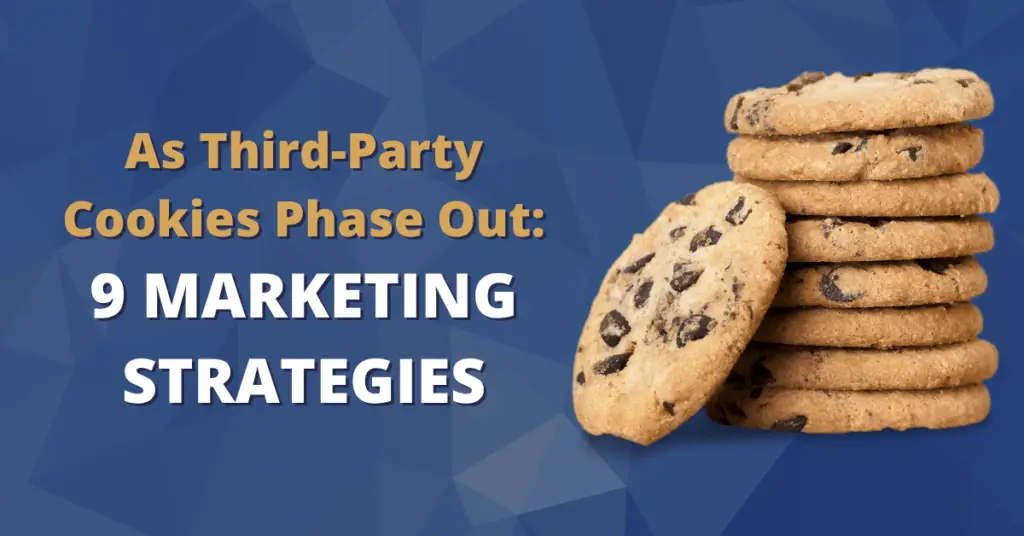
We asked nine experts how marketers can adapt to the upcoming loss of third-party cookies. Here’s what they told us.
1. Embrace First-Party Data Collection

Precious Abacan, Marketing Director, Softlist
Start focusing on first-party data. Adapt! As we head into 2024, digital marketers will find themselves in an environment with stricter privacy laws and less reliance on third-party cookies. As a result, the industry is starting to see first-party data as the new go-to.
The main thing now is to get users’ permission and be clear about how data is handled, with a big emphasis on collecting and storing data ethically. This means embracing zero-party data collection and advertising methods that respect users’ privacy. These steps are vital for gaining consumers’ trust and will help businesses provide personalized experiences while keeping privacy intact. This change is in line with the evolving laws and the growing demand from consumers for responsible handling of their data.
2. Prioritize Direct Customer Relationships

Justin Cole, President and SEO Strategist, Tested Media
Data is like the new oil. Refining it will drive the 21st-century engines of prosperity. Businesses that invest in first-party data platforms see an increase in marketing ROI.
Invest in building a robust first-party data infrastructure. Offer incentives for users to share data through loyalty programs, personalized experiences, or valuable content. Then, cultivate deeper connections through email marketing, social media engagement, loyalty programs, and personalized customer experiences. Finally, invest in creating valuable content, exceptional customer service, and genuine brand experiences that grow trust and loyalty. Loyal customers are more likely to share data and engage directly with your brand.
3. Incentivize Voluntary Data Sharing

Patrick Beltran, Marketing Director, Ardoz Digital
Provide value to customers and seek their consent. The discontinuation of third-party cookies doesn’t imply that businesses must halt data collection and utilization in their marketing efforts. Instead, the focus should be on optimizing the data voluntarily shared by individuals.
This data, commonly referred to as first-party data, is the information customers willingly provide on a digital platform you own, such as your website. Some businesses encourage users to create accounts to access software or view wholesale pricing. They may allow customers to create wish lists or mark items as “liked”—features that entice customers to register. Similarly, you can offer valuable content downloads or product demos in exchange for an email address and motivate subscribers to complete surveys or preference centers to provide additional data.
Offer customers valuable incentives or content to encourage them to willingly share their data. Once you have their explicit opt-in, you can personalize your approach or offers based on what you know about a visitor’s preferences or their past order history.
4. Leverage Email Marketing Assets

Tracey Beveridge, HR Director, Personnel Checks
Focus on your mailing list as an internal business asset. It’s something that not a lot of businesses do, and it’s so crucial in developing your customer journeys and loyalty. 2024 is the year of the newsletter!
5. Build Interactive First-Party Databases
As third-party cookies phase out, marketers can focus on building first-party data through customer engagement strategies. Encourage users to share information by offering personalized experiences, exclusive content, or loyalty programs.
For the best results, create interactive and value-driven content. It incentivizes users to provide their data voluntarily. Once you have a decent list, you can send newsletters or subscription services over email.
This way, you can gather first-party data from users who have opted in. It’s a more reliable and privacy-compliant database than using cookies. You can leverage it to build relationships with your customers and establish a transparent channel of communication.
6. Track Sales & Marketing Correlations

Robert Brill, CEO, Brill Media
Focus on source-of-truth sales from your entire organization, tracked daily, and compared with the costs and results of your marketing activities, also tracked daily. This way, you’ll know over time which actions in your marketing efforts are correlated with more business-wide sales.
For more precise tracking, onboard a customer data platform and an attribution partner to get detailed insights about the performance of your advertising activities.
7. Explore Contextual Advertising Opportunities

Eric Eng, Founder and CEO, Private College Admissions Consultant, AdmissionSight
Aside from first-party cookies, a good strategy for marketers to develop or turn to would be contextual advertising. Contextual advertising leverages keywords and phrases within the content of a website or webpage to display relevant ads, rather than relying on user data from cookies.
This approach allows for more targeted and personalized advertisements without infringing on users’ privacy. It’s important for marketers to also focus on creating engaging and valuable content that will naturally attract their target audience, rather than solely relying on targeted ads. This can include utilizing social media platforms to build brand awareness and establish a strong online presence.
However, all strategies should be complemented with a strong understanding of and adherence to data privacy laws, and transparency and ethical practices when collecting and using user data. As technology evolves, marketers need to adapt and find innovative ways to reach their audience without compromising user privacy.
8. Foster Permission-Based Customer Engagement

Bill French, Sales, USA Borescopes
In the ever-evolving digital landscape, as the era of third-party cookies fades away, savvy marketers are setting sail toward the shores of personalized, permission-based marketing. Picture it like an exclusive club where customers willingly opt in to receive tailored content and experiences. This strategy focuses on building genuine relationships by putting the customer in the driver’s seat, allowing them to choose the level of engagement they’re comfortable with.
By fostering trust and delivering valuable content, marketers can create a bespoke experience that not only respects privacy but also resonates with the audience on a personal level. It’s like having a conversation with your favorite barista who knows just how you like your coffee—tailored, enjoyable, and built on mutual understanding. Welcome to the future of marketing, where permission is the new currency, and the customer is the VIP.
9. Create Engaging Interactive Content

Harry Morton, Founder, Lower Street
Marketers can pivot toward creating engaging and interactive content to encourage direct audience interaction. By fostering genuine connections and experiences, brands can build strong customer relationships without relying on third-party cookies for tracking, ensuring continued effectiveness in a cookie-less landscape.
Need some help updating your marketing strategy as third-party cookies phase out? Contact our team of experts today.


